OSN 9800 U32 Enhanced
Huawei OptiX OSN 9800 U32 Enhanced Subrack
Huawei
- Description
- DATASHEET
- Packing info
- Comparison
- Reviews (1)
Description
OSN 9800 U32 Enhanced overview
Intended for 100G and beyond 100G optical networks, the OSN9800 32 Enhanced subrack is a next-generation large-capacity OTN product that integrates ASON, OTN, and packet functions. It is applicable to various networks, including super-backbone, backbone, and metro networks.
OSN 9800 U32 Enhanced subrack areas and slots(Used with the U1UCXCS/U4UCXCS)
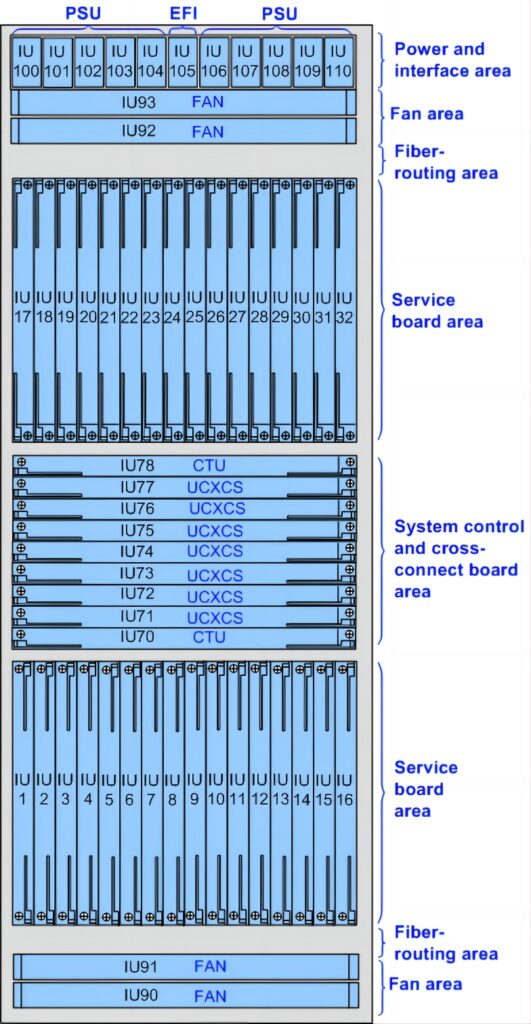

Descriptions of the areas and slots in the OptiX OSN 9800 U32 Standard subrack
| Area | Composition | Slot | Function |
| Power and interface area | 1 EFI board and 10 PSU boards | PSU: IU100-IU104, IU106-IU110 EFI: IU105 | The PSUs of the subrack work in N+N (3 ≤ N ≤ 5) backup mode. The failure of any N power inputs does not affect the normal running of the device. The EFI board provides maintenance and management interfaces. |
| Fan areas | 4 fan tray assemblies | Lower portion: IU90, IU91 Upper portion: IU92, IU93 | The fan tray assemblies are used to ventilate the equipment. |
| Fiber-routing areas | 2 fiber troughs | N/A | Fiber patch cords connecting to boards are routed to the left or right side of the subrack through the upper- and lower-side fiber troughs. |
| Service board areas | 32 service boards | Lower portion: IU1-IU16 Upper portion: IU17-IU32 | Service boards need to be configured based on the service plan and all of them are installed in the two service board areas. The (TNV2SXCL/TNV3SXCL) board must be inserted into this area. NOTE: Service boards installed in slots IU1-IU16 have their ejector levers on the right sides of the board front panels. Service boards installed in the remaining slots in the two areas have their ejector levers on the left sides of the board front panels. |
| System control and cross-connect board area | 2 CTU system control boards and 7 UCXCS cross-connect boards | UCXCS: IU71-IU77 CTU: IU70, IU78 | Seven cross-connect boards of the U32 Enhanced subrack form a cross-connect resource pool for service grooming. When two UCXCS boards are faulty, the system can still function properly. If more than two UCXCS boards become faulty, the system will fail. The cross-connect boards provide cross-connections for service boards. The system control boards are configured in 1+1 backup mode. The active system control board manages and provides a clock to all other boards in the equipment. It also provides for inter-NE communication. |
OSN 9800 U32 Standard cross-connect capacities
This topic describes the cross-connect capacity of a service slot and an OptiX OSN 9800 U32 subrack.
| Subrack Type | Maximum Cross-Connect Capacity of Each Slot | Maximum Cross-Connect Capacity of Subrack | ||||||||
| ODUk | OSUflex | VC-4 | VC-3/VC-12a | Packet | ODUk | OSUflex | VC-4 | VC-3/VC-12 | Packet | |
| Standard | 400 Gbit/s | 400 Gbit/s | 160 Gbit/s | 160 Gbit/s | 400 Gbit/s | 25.6 Tbit/s | 25.6 Tbit/s | 10.24 Tbit/s | 160 Gbit/s | 25.6 Tbit/s |
| Enhanced | 1Tbit/s | 1Tbit/s | 160 Gbit/s | 160 Gbit/s | 400 Gbit/s | 64 Tbit/s | 64 Tbit/s | 10.24 Tbit/s | 160 Gbit/s | 25.6 Tbit/s |
| a: All service slots share a bandwidth of 160 Gbit/s. | ||||||||||
Supported Services Types (U32 Enhanced)
| Service Category | Service Type | Service Rate | Board | Standard Compliance |
| SDH | STM-1 (optical signal) | 155.52 Mbit/s | TNV3T210, TNV6T216, TNV3T220, TNV3T230, TNV6T230, TNV6T220, TNV7T220, TNV3G220, TNV3S216, TNV4S216, TNV6S216, TNV6G216, TNV6G230 | ITU-T G.707 ITU-T G.691 ITU-T G.957 ITU-T G.693 ITU-T G.783 ITU-T G.825 |
| STM-1 (electrical signal) | 155.52 Mbit/s | TNV6S216 | ||
| STM-4 | 622.08 Mbit/s | TNV3T210, TNV6T216, TNV3T220, TNV3T230, TNV6T230, TNV6T220, TNV7T220, TNV3G220, TNV3S216, TNV4S216, TNV6S216, TNV6G216, TNV6G230 | ||
| STM-16 | 2.5 Gbit/s | TNV3T210, TNV6T216, TNV3T220, TNV3T230, TNV6T230, TNV6T220, TNV7T220, TNV3G220, TNV3S216, TNV4S216, TNV6S216, TNV6G216, TNV6G230 | ||
| STM-64 | 9.95 Gbit/s | TNV3T210, TNV6T216, TNV3T220, TNV3T230, TNV6T230, TNV6T220, TNV7T220, TNV3G220, TNV3S216, TNV4S216, TNV6S216, TNV6G216, TNV6G230 | ||
| SONET | OC-3 | 155.52 Mbit/s | TNV3T210, TNV6T216, TNV3T220, TNV3T230, TNV6T230, TNV6T220, TNV7T220, TNV3G220, TNV6G216, TNV6G230 | GR-253-CORE GR-1377-CORE ANSI T1.105 |
| OC-12 | 622.08 Mbit/s | TNV3T210, TNV6T216, TNV3T220, TNV3T230, TNV6T230, TNV6T220, TNV7T220, TNV3G220, TNV6G216, TNV6G230 | ||
| OC-48 | 2.5 Gbit/s | TNV3T210, TNV6T216, TNV3T220, TNV3T230, TNV6T230, TNV6T220, TNV7T220, TNV3G220, TNV6G216, TNV6G230 | ||
| OC-192 | 9.95 Gbit/s | TNV3T210, TNV6T216, TNV3T220, TNV3T230, TNV6T230, TNV6T220, TNV7T220, TNV3G220, TNV6G216, TNV6G230 | ||
| Ethernet service | FE (optical signal) | Interface rate: 125 Mbit/s | TNV3T210, TNV6T216, TNV3T220, TNV3T230, TNV6T230, TNV6T220, TNV7T220, TNV3G220, TNV2E224, EMS20, TNV3T220E, TNV6G216, TNV6G230, V1EMS12 | IEEE 802.3u |
| Service rate: 100 Mbit/s | ||||
| GE (optical signal) | Interface rate: 1.25 Gbit/s | TNV3T210, TNV6T216, TNV3T220, TNV3T230, TNV6T230, TNV6T220, TNV7T220, TNV3G220, TNV2E224, EMS20, TNV3T220E, TNV6G216, TNV6G230, V1EMS12 | IEEE 802.3z | |
| Service rate: 1 Gbit/s | ||||
| GE (electrical signal) | Interface rate: 1.25 Gbit/s | TNV3T210, TNV6T216, TNV3T220, TNV3T230, TNV6T230, TNV6T220, TNV7T220, TNV3G220, TNV2E224, EMS20, TNV3T220E, TNV6G216, TNV6G230, V1EMS12 | IEEE 802.3ab | |
| Service rate: 1 Gbit/s | ||||
| 10GE WAN | 9.95 Gbit/s | TNV3T210, TNV6T216, TNV3T220, TNV3T230, TNV6T230, TNV6T220, TNV7T220, TNV3G220, TNV6G216, TNV6G230 | IEEE 802.3ae | |
| 10GE LAN | 10.31 Gbit/s | TNV3T210, TNV6T216, TNV3T220, TNV3T230, TNV6T230, TNV6T220, TNV7T220, TNV3G220, TNV2E224, EMS20, TNV3T220E, TNV6G216, TNV6G230, V1EMS12 | ||
| 25GE | 25.78 Gbit/s | TNV6T216, TNV7T220, TNV6T230, TNV3E224, TNV6G216, TNV6G230 | IEEE 802.3by | |
| 40GE | 41.25 Gbit/s | TNV5T401, TNV5T402, TNV5T404, TNV7T402, TNV8T402, TNV8T404, T410, T502 | IEEE 802.3ba | |
| 50GE | 51.5625 Gbit/s | T502, TNV3E402, TNV3E404 | ||
| 100GE | 103.125 Gbit/s | TNV3T401, TNV3T402, TNV3T404, TNV5T401, TNV5T402, TNV5T404, TNV7T402, TNV8T402, TNV8T404, G402, G404, TNV2E402, T410, T502, T402E, TNV3E404 | ||
| 200GE | 206.25 Gbit/s | T502 | ||
| 400GE | 412.5 Gbit/s | T601 | ||
| Flex Ethernet service (FlexE) | FlexE Unaware (50G) | 51.5625Gbit/s | T502 | IA Flex Ethernet 2.1 |
| FlexE Unaware (100G) | 103.125Gbit/s | TNV8T402, TNV8T404, T502, TNV5T401, TNV5T402, TNV7T402, TNV5T404, TNV1T410 | ||
| FlexE Aware (200G) | 206.25Gbit/s | T502 | ||
| SAN service | FDDI | 125 Mbit/s | TNV3T210, TNV6T216, TNV3T220, TNV3T230, TNV6T230, TNV6T220, TNV7T220, TNV3G220, TNV6G216, TNV6G230 | ISO 9314 |
| ESCON | 200 Mbit/s | TNV3T210, TNV6T216, TNV3T220, TNV3T230, TNV6T230, TNV6T220, TNV7T220, TNV3G220, TNV6G216, TNV6G230 | ANSI X3.296 ANSI X3.230 ANSI X3.303 | |
| FICON | 1.06 Gbit/s | TNV3T210, TNV6T216, TNV3T220, TNV3T230, TNV6T230, TNV6T220, TNV7T220, TNV3G220, TNV6G216, TNV6G230 | ||
| FICON Express | 2.12 Gbit/s | TNV3T210, TNV6T216, TNV3T220, TNV3T230, TNV6T230, TNV6T220, TNV7T220, TNV3G220, TNV6G216, TNV6G230 | ||
| FC100 | 1.06 Gbit/s | TNV3T210, TNV6T216, TNV3T220, TNV3T230, TNV6T230, TNV6T220, TNV7T220, TNV3G220, TNV6G216, TNV6G230 | ||
| FC200 | 2.12 Gbit/s | TNV3T210, TNV6T216, TNV3T220, TNV3T230, TNV6T230, TNV6T220, TNV7T220, TNV3G220, TNV6G216, TNV6G230 | ||
| FC400/FICON4G | 4.25 Gbit/s | TNV3T210, TNV6T216, TNV3T220, TNV3T230, TNV6T230, TNV6T220, TNV7T220, TNV3G220, TNV6G216, TNV6G230 | ||
| FC800/FICON8G | 8.5 Gbit/s | TNV3T210, TNV6T216, TNV3T220, TNV3T230, TNV6T230, TNV6T220, TNV7T220, TNV3G220, TNV6G216, TNV6G230 | ||
| FC1200 | 10.51 Gbit/s | TNV3T210, TNV6T216, TNV3T220, TNV3T230, TNV6T230, TNV6T220, TNV7T220, TNV3G220, TNV6G216, TNV6G230 | ||
| FC1600 | 14.025 Gbit/s | TNV3T210, TNV6T216, TNV3T220, TNV3T230, TNV6T230, TNV6T220, TNV7T220, TNV3G220, TNV6G216, TNV6G230 | ||
| FC3200 | 28.05 Gbit/s | TNV6T216, TNV7T220, TNV6T230, TNV6G216, TNV6G230 | ||
| OTN service | OTU1 | 2.67 Gbit/s | TNV3T210, TNV6T216, TNV3T220, TNV3T230, TNV6T230, TNV6T220, TNV7T220, TNV3G220, TNV3S216, TNV4S216, TNV6G216, TNV6G230 | ITU-T G.709 ITU-T G.959.1 GR-2918-CORE |
| OTU2 | 10.71 Gbit/s | TNV3T210, TNV6T216, TNV3T220, TNV3T230, TNV6T230, TNV6T220, TNV7T220, TNV3G220, TNV6G216, TNV6G230 | ||
| OTU2e | 11.10 Gbit/s | TNV3T210, TNV6T216, TNV3T220, TNV3T230, TNV6T230, TNV6T220, TNV7T220, TNV3G220, TNV6G216, TNV6G230 | ||
| OTU4 | 111.81 Gbit/s | TNV3T401, TNV3T402, TNV3T404, TNV5T401, TNV5T402, TNV5T404, TNV7T402, TNV8T402, TNV8T404, G402, G404, T410, T502 | ||
| Video service | DVB-ASI | 270 Mbit/s | TNV3T210, TNV6T216, TNV3T220, TNV3T230, TNV6T230, TNV6T220, TNV7T220, TNV3G220, TNV6G216, TNV6G230 | EN 50083-9 |
| SDI | 270 Mbit/s | TNV3T210, TNV6T216, TNV3T220, TNV3T230, TNV6T230, TNV6T220, TNV7T220, TNV3G220, TNV6G216, TNV6G230 | SMPTE 259M | |
| HD-SDI | 1.49 Gbit/s | TNV3T210, TNV6T216, TNV3T220, TNV3T230, TNV6T230, TNV6T220, TNV7T220, TNV3G220, TNV6G216, TNV6G230 | SMPTE 292M | |
| HD-SDIRBR | 1.49/1.001 Gbit/s | TNV3T210, TNV6T216, TNV3T220, TNV3T230, TNV6T230, TNV6T220, TNV7T220, TNV3G220, TNV6G216, TNV6G230 | ||
| 3G-SDI | 2.97 Gbit/s | TNV3T210, TNV6T216, TNV3T220, TNV3T230, TNV6T230, TNV6T220, TNV7T220, TNV3G220, TNV6G216, TNV6G230 | SMPTE 424M | |
| 3G-SDIRBR | 2.97/1.001 Gbit/s | TNV3T210, TNV6T216, TNV3T220, TNV3T230, TNV6T230, TNV6T220, TNV7T220, TNV3G220, TNV6G216, TNV6G230 |
Additional information
| Weight | 180 kg |
|---|---|
| Dimensions | 220 × 60 × 60 cm |
| Specifications | OSN 9800 U64 Enhanced | OSN 9800 U32 Enhanced | ||
| Subrack dimensions (mm) | 2200 (H) x 600 (W) x 600 (D) (the subrack is integrated into a cabinet) | 1900 (H) x 498 (W) x 295 (D) (without cabinet) | ||
| Suitable cabinets | The subrack is integrated into a cabinet, and no additional cabinet needs to be configured. | ETSI 300/600 cabinets, such as A63B | ||
| Max. number of service board slots | 64 | 32 | ||
| Switching capability | Optical | N/A | ||
| Electrical | 64 Tbit/s OSUflex/ODUk (k = 0, 1, 2, 2e, 3, 4, flex) 25.6 Tbit/s packet services 10.24 Tbit/s VC-4 160 Gbit/s VC-3/VC-12 | 2:2 mode: 12.8 Tbit/s OSUflex/ODUk (k = 0, 1, 2, 2e, 3, 4, flex) 12.8 Tbit/s packet services 5.12 Tbit/s VC-4 160 Gbit/s VC-3/VC-12 2:5 mode: 32 Tbit/s OSUflex/ODUk (k = 0, 1, 2, 2e, 3, 4, flex) 12.8 Tbit/s packet services 5.12 Tbit/s VC-4 160 Gbit/s VC-3/VC-12 | ||
| Max. number of wavelengths | Fixed grid: 120 wavelengths @50 GHz grid | |||
| Flexible grid: The maximum number of wavelengths is related to the width of the flex channel. | ||||
| Center wavelength range | DWDM system: 1524.50 nm to 1572.06 nm (Super C band) | |||
| CWDM system: 1471 nm to 1611 nm (S+C+L band) | ||||
| Max. rate per channel | 800 Gbit/s (OTUC8) | |||
| Service type | Synchronous digital hierarchy (SDH)/synchronous optical network (SONET), Ethernet, storage area network (SAN), optical transport network (OTN), and video | |||
| Packet service capacity | Support for E-Line/E-LAN (MEF) and VPWS/VPLS (IETF) Support for MPLS-TP Number of MPLS tunnels: 64 x 1024 Number of PWs: 64 x 1024 Number of E-Line services: 32 x 1024 Number of E-LAN services: 8 x 1024 | |||
| Line rate | 1.25 Gbit/s, 2.5 Gbit/s, 10 Gbit/s, 25 Gbit/s, 100 Gbit/s, 200 Gbit/s, 400 Gbit/s, 600 Gbit/s, 800 Gbit/s | |||
| Supported pluggable optical modules | eSFP, SFP+, CFP, CFP2, QSFP28, SFP28, TSFP28, QSFP+, QSFP-DD | |||
| Topology | Point-to-point, chain, star, ring, ring-with-chain, tangent ring, intersecting ring, and mesh | |||
| Redundancy and protection | Equipment level protection | Power supply redundancy, fan redundancy, cross-connect board redundancy, communication control and clock processing unit redundancy | ||
| Network-level protection (OTN) | Client 1+1 protection, ODUk SNCP, OSUflex SNCP, tributary SNCP, intra-board 1+1 protection, LPT | |||
| Network-level protection (Packet) | ERPS, LAG, PW APS/FPS, Tunnel APS, MC-LAG, MC-PW APS, LPT | |||
| Network level protection (SDH) | SNCP, linear MSP, ring MSP | |||
| Network level protection (EoS) | LAG, DLAG, LCAS, LPT, STP/RSTP, BPS, PPS | |||
| Optical power management | ALS, IPA, IPA of the Raman system | |||
| Synchronization | Synchronous Ethernet | |||
| IEEE 1588v2 | ||||
| ITU-T G.8275.1 | ||||
| ITU-T G.8273.2 | ||||
| High-precision clock synchronization | ||||
| ASON | Electrical-layer ASON | |||
| Optical-layer ASON | ||||
| TSDN | Online service provisioning | |||
| Survivability analysis | ||||
| BOD | ||||
| IP+optical synergy | ||||
| Submarine cable features | Supports the application of extended C band in submarine cable scenarios. | |||
| Nominal working voltage | DC power input | |||
| Standard working voltage: -48 V DC/-60 V DC | ||||
| Working voltage range: | ||||
| -48 V DC: -40 V to -57.6 V | ||||
| -60 V DC: -48 V to -72 V | ||||
| AC power input | ||||
| Standard working voltage: 110 V AC/220 V AC | ||||
| Working voltage range: | ||||
| 110 V AC: 100 V to 130 V | ||||
| 220 V AC: 200 V to 240 V | ||||
| High-voltage DC power input | ||||
| Standard working voltage: 240V HVDC | ||||
| Working voltage range: 240V to 336V | ||||
| Operation environment | Subrack temperature: | |||
| Long-term operation: 5°C (41°F) to 40°C (104°F) | ||||
| Short-term operation: -5°C (23°F) to 45°C (113°F) | ||||
| Relative humidity: | ||||
| Long-term operation: 5% to 85% | ||||
| Short-term operation: 5% to 90% | ||||
| Mean Time To Repair (MTtr) | 4 hours | |||
| Mean Time Between Failure (MTBF) | 64.22 years | |||
| Availability | 0.99999289 | |||
| a: The ETSI/19-inch standard defines only part of the cabinet dimensions. Therefore, the distance between the cabinet column and door plate varies depending on cabinet manufacturers. For details about the dimensions of different subracks, see the detailed description of each subrack. | ||||
| b: Short-term operation means that the continuous operating time does not exceed 96 hours and the accumulated time per year does not exceed 15 days. | ||||



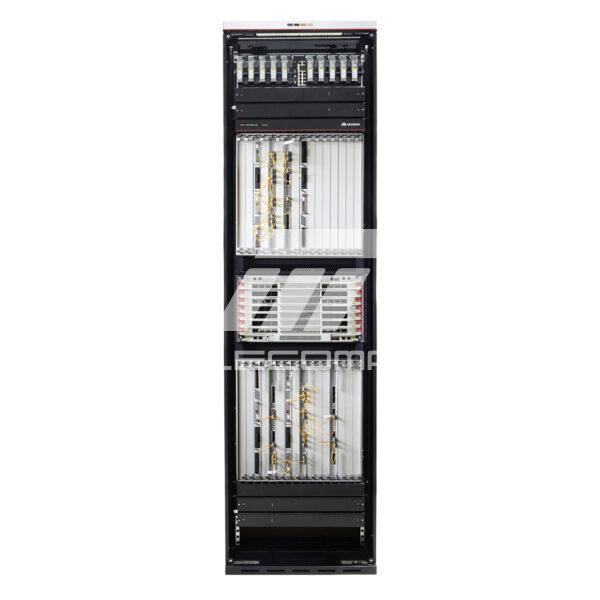
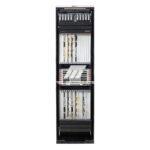
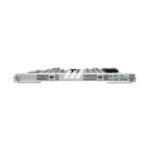
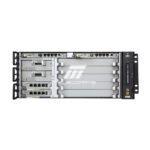
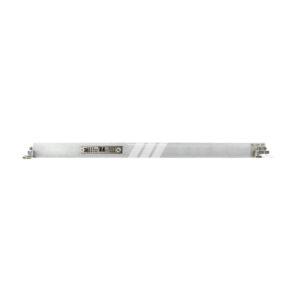
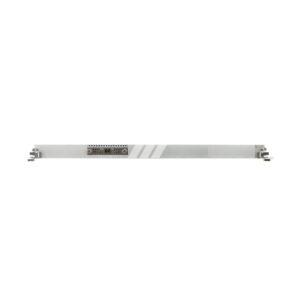
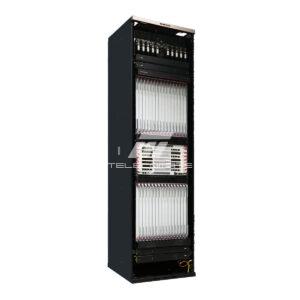
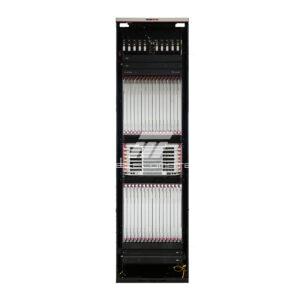
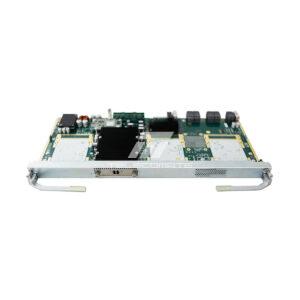
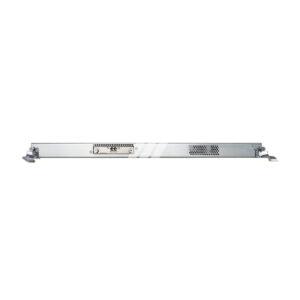

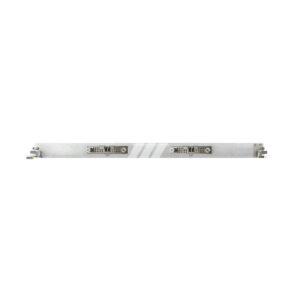
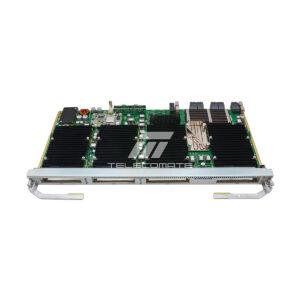
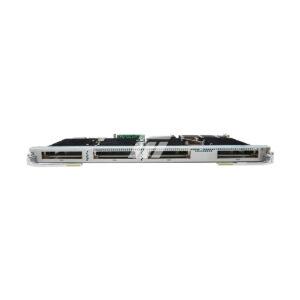
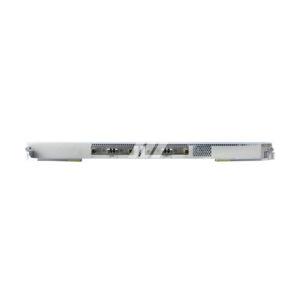
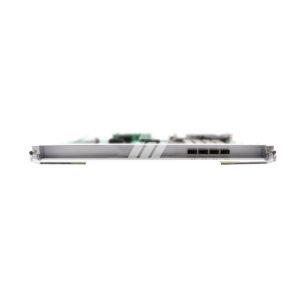
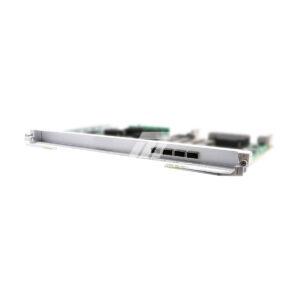
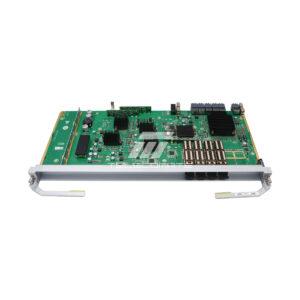
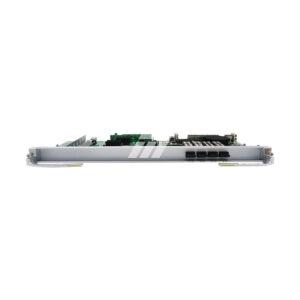
Darren –
Multiple transactions are very satisfied, and the sales agent is very professional.